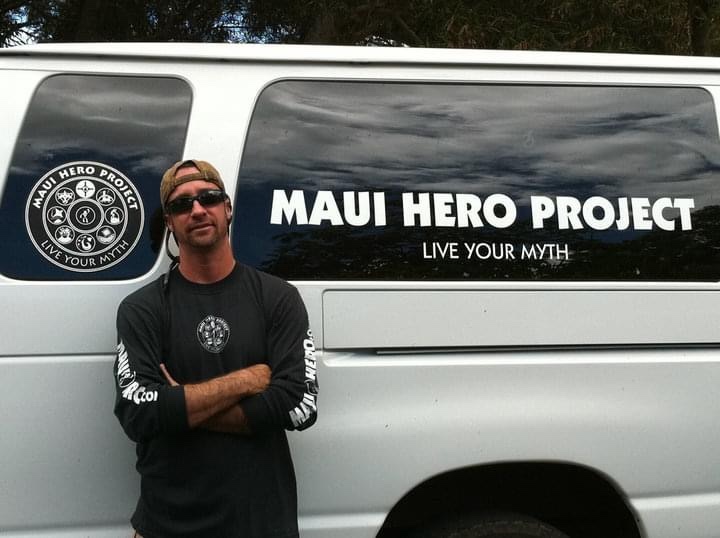By: Mario Canul

Photo taken by the Faulkes Telescope North at 06:58 UTC on October 21, 2011 using an Oxygen-III filter with a 0.1sec exposure.
Image credit: Mario Canul & Christian Innela
Light pollution is an increasing problem that many people aren’t aware of. Anyone can appreciate the marvel that is looking up at the sky and finding a sky full of beautiful stars. Living on an island like Maui, the night sky is a common sight that attracts tourists. Because the island is away from pollution, the clear skies make it easy for people to observe the cosmos, making it the perfect place to set up astronomy centers, such as the Institute for Astronomy.
While people on Maui have the luck to not have air pollution that would otherwise obstruct the night sky, they deal with another problem: light pollution. Light pollution is created by the arrays of light that are of higher intensity than the night sky. This is called the relative luminance. For example, even though the sun is really bright, it will pale in comparison with a really bright stadium light right in front of your face. This idea can be modeled in what astronomers call the inverse square law of light.
The idea of the inverse square law is that the intensity of light is proportional to the square of the distance to the object emitting the light. For example, if you are distance “R” from an object, and you move distance “2R”, the ratio of light intensity would be a fourth the strength as if they were “R” away. Thanks to this relationship, it can be seen that lights that are closer to us, although artificial, can easily overcome the brightness in the sky.
How can light pollution be a problem on an island like Maui? There are no big skyscrapers, no bright neon lights everywhere—so what’s going on? Well, the thing is that you don’t need to have big skyscrapers in order to pollute the sky. The sum of all of the lights around a city or town attributes to city sky glow; this makes it hard for amateur astronomers to find a good place to make observations. The rapid development and over-proliferation of light causes amateur astronomers to travel farther from their favorite locations.
The most important instrument for an astronomer in order to observe the cosmos should not be a car full of gas.
Dr. James Armstrong works at the Institute for Astronomy in Pukalani and has also taught astronomy courses at UH Maui College. “We’re actually pretty lucky on Maui that it hasn’t gotten too bad,” he said, “but it is affecting the telescope here on Maui.” The ways that light pollution affects the telescope is the amount of things it can see.
Armstrong said that light pollution is in fact a problem, and it does matter. “From a love for astronomy, and the connection to nature, we should be aware of light pollution and work on ways of minimizing our light pollution,” he said. “Light pollution is not financially sound or ecologically sound. The energy to make that light has to come from somewhere. At night, solar power cannot be used to power light so an alternative fuel like diesel must be used. Light pollution is not a huge contribution to CO2 but it’s another step that we can make.”
Armstrong said light pollution isn’t just an inconvenience to people trying to study the stars—it can also affect wildlife, such as turtles and seabirds.
Many bird species migrate across the United States, and some are susceptible to the light pollution that occurs because of the cities that they have to fly across. There have been several incidents of whole flocks crashing onto brightly lit towers.
Some of the most well known sources of light pollution are football fields on high school campuses. In places where there is a low light concentration, such as Pukalani, a bright football field might not allow an astronomer to make the observation they want. In fact, it’s because of the lack of concentration of light that makes a really bright football field seem even brighter relatively. The problem isn’t just a localized problem on Maui; it happens all over the world. There are famous pictures taken by the International Space Station that show light pollution on a global scale.
Sifan Kahale is another Institute for Astronomy employee who holds a degree in chemistry. She has spent most of her life in computer automation and design and has some things to say about light pollution on Maui. “Broadband terrestrial lights, especially those that are omni-directional—wasting light by radiating up—not only tend to light up dust and small particles in the air, but also radiate across a wide spectrum of light, making astronomical observations difficult over those areas,” she explained.
Kahale suggested a few ways to reduce light pollution. “Aim lights at the ground, use shields above them to reflect more light to the ground, use specially designed lights that have restricted spectral bandwidth to allow telescope to filter it out,” she said.
Like Armstrong, Kahale believes the issue of light pollution is an important one. “I’m also an amateur astronomer and light pollution restricts what I can see with my own telescope, binoculars or just with the naked eye,” she said. “The top of Haleakala is rated as one of the top five places in the entire world for dark skies… this is a valuable resource and becoming very rare. In New York City, for example, you can only see the brightest dozen stars. Here on Maui, in town, we can still see a beautiful sky.”
And that’s something she says we shouldn’t take for granted.
“There is something important in being able to see the night sky it unites us and reminds us of who and where we are,” Kahale said. “It brings science and our knowledge of our surroundings clearly out in front of us. If we lose technology, we will once more need the stars to help us tell the time of year, when to plant or fish or how to navigate.”
Even though the Pan-STARRS telescope atop Haleakala National Park is above the clouds, light pollution is still a concern. “The PanSTARRs telescope is affected by light all the way from Oahu,” Kahale said. “So, yes, especially if the high schools have their football lights on… it has a huge effect.”
Jacob Glenn-Evans, a UH Maui College student who is also an enthusiastic scientist, had a few ideas regarding the psychological nature of light pollution. “Constant light in cities can affect people in different ways, such as weird sleeping patterns and with symptoms similar to Seasonal Affective Disorder,” he explained. Evans has also been to Alaska, where he did a couple of observations of people who also lack the presence of light and noticed that it can affect people psychologically.
Light pollution is a problem that affects not just scientists, astronomers and amateur astronomers, but also animal and human health. That said, there are many who believe we should do our part to reduce our contribution towards light pollution—and we should not be able to call the sky glow “beautiful” when it can do so much damage.
Comments (2)
-
It seems like I’m constantly reading about another way in which we are harming our environment. It makes me sad to hear about all of the harm we’re doing – especially to our atmosphere. I’ve been doing tons of reading over the past 12 months or so, and I was probably most surprised to discover that the EPA has publically stated that the air inside of the normal home in the US is even 2-5x worse than the air outside. If you combine this with the reality that adults can process up to seventy thousand liters of air a day, it seems like a pretty serious) (cause for concern regarding the continued pollution of our world. How can we expect to stay free of illness – regardless of how well we try to live and eat – if we are steadily taking in chemical pollution and contaminants?
-
It seems like I’m constantly reading about another way in which we are harming our environment. It makes me sad to hear about all of the harm we’re doing – especially to our atmosphere. I’ve been doing tons of reading over the past





